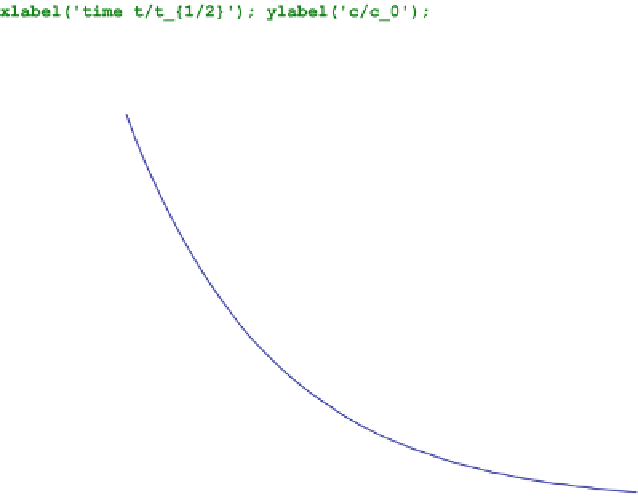Environmental Engineering Reference
In-Depth Information
c ¼ c
0
exp
ð
l
tÞ
(5.4)
which holds for the initial condition
c
(
t ¼
¼ c
0
. The exponential function
obviously is the solution for a component with first order decay - that explains
the notation
exponential decay
.
The
half-life
t
½
is the time period in which the component concentration declines
to half of the initial value. Thus according to (
5.4
) the
t
½
is characterized by the
condition
0)
1
=
2
¼
exp
ð
l
t
1
=
2
Þ
(5.5)
which is equivalent to the condition
t
1
=
2
¼
. This is the reciprocate relation
between decay constant and half-life. With t
½
exponential decay can be noted in
dimensionless form as:
ln
ð
2
Þ=
l
c
c
0
¼
t
t
1
=
2
Þ
exp
ð
ln
ð
2
Þ
(5.6)
for the dimensionless variables
c
/
c
0
and
t
/
t
½
. For the time period of five half-lifes
the function is depicted by the following MATLAB
®
commands in Fig.
5.2
.
1
0.9
0.8
0.7
0.6
0.5
0.4
0.3
0.2
0.1
0
0
1
2
3
4
5
time t/t
1/2
Fig. 5.2
Exponential decay as represented by dimensionless variables

































































































